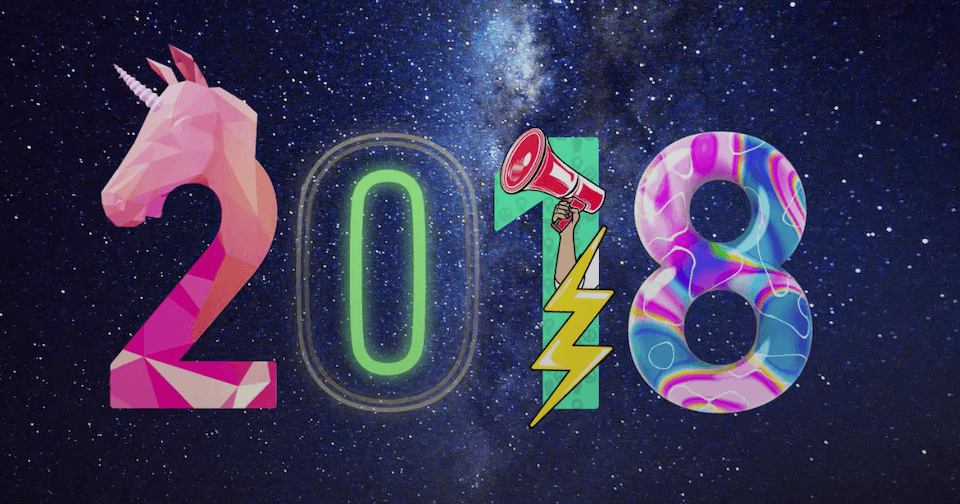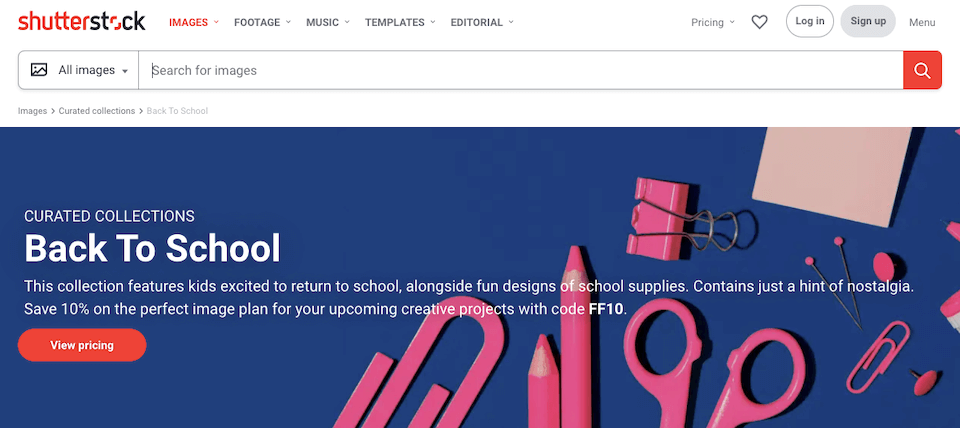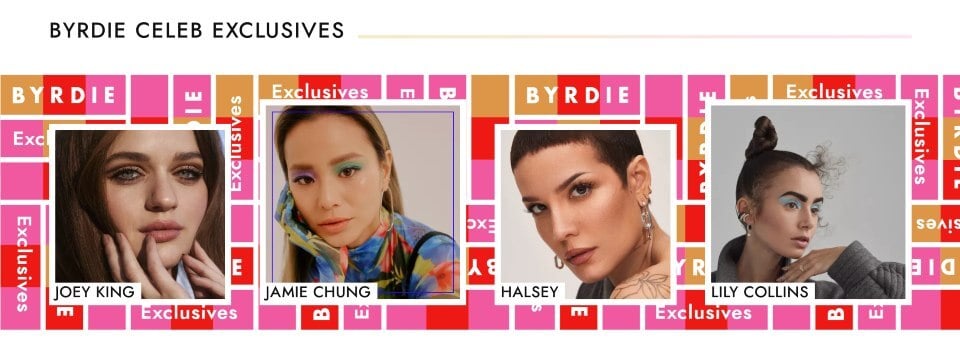
What Is Content Marketing? The Definitive Guide
Oct 28, 2021|Read time: 15 min.
Key Points
- Content marketing is the strategic publication and distribution of content across platforms to deliver value to your audience.
- The best content is all about your audience and delivers real value to them.
- Great content marketing increases brand awareness, organic traffic, social media shares, engagement, authority, conversions, brand loyalty, and online market share.
Content marketing is an incredibly effective way to connect with your target audience because it delivers immense value throughout the customer lifecycle. It satisfies curiosities, sparks emotions, and fuels shopping decisions in ways that other types of marketing simply can’t.
Unlike disruptive advertising, consumers actually seek out the best content marketing efforts.
Read on to learn what content marketing is, why it’s important, and why it’s poised to become one of the biggest drivers of business growth within your marketing mix.
What is content marketing?
Marketing term
Content Marketing
Content marketing is the strategic publication and distribution of content across platforms and channels to deliver value to your audience.
Content marketing lets you connect with your audience instead of simply promoting your products and services. In other words, content marketers don’t ask themselves, “How can we sell more stuff?” Instead, they wonder, “How can we create memorable experiences that solve problems, increase brand awareness, galvanize trust, and amplify brand love?”
This audience-first approach is just one of the many reasons content marketing is so impactful.
Content marketing delivers business results
The value of content marketing extends across the entire business. It drives brand awareness, revenue, and better ROI by assembling and growing an engaged audience.
Improves marketing return on investment (ROI)
One of the biggest benefits of content marketing is the long-term sustainability of the ROI. It’s like building equity in a home rather than renting an apartment.
The long-term impact reverberates across several digital marketing channels, metrics, and KPIs, improving your business’s bottom line. In fact, it is one of the key drivers for marketing ROI overall.
The key is to learn how to measure content marketing ROI more effectively so you can prove the value of your investment to business leaders.
Increases brand awareness
Content marketing keeps your brand top of mind throughout the buying journey.
In some ways, the impact of content marketing campaigns can be direct and measurable. For example, you can analyze referral traffic or conversion rates from social media channels like Twitter, Facebook or LinkedIn.
In other ways, such as brand awareness, it’s harder to determine the full value of content. For example, your audience segments and buyer personas may not take meaningful action the first time they discover your company. However, if they consistently encounter great content from you, then they’ll start to develop a positive association with your brand.
Over time, they’ll accrue more data points in their brain that inform their shopping preferences:
- How helpful has your content been?
- Has it been entertaining?
- Does it feel authentic?
- Is it likeable?
- How has the content helped to establish that your brand’s values overlap with their own?
When it’s time to make a purchase, your brand will be top of mind.
It’s hard to connect individual pieces of content to stronger brand recognition because you earn brand awareness incrementally. However, cumulatively, great content leads directly to long-term, positive brand sentiment.
Educates your audience
One truly unique purpose of content marketing is to educate the audience. Long-form content such as blog posts are more in-depth than other content formats, like PPC ads, ecommerce copywriting, and direct mail. As a result, you’ll be able to answer more complex questions by producing this kind of content.
Moreover, when you educate your audience earlier in the customer journey, you’ll reach them before the critical decision making process. That means you’ll be able to control the set of solutions they consider in the end.
You can also leverage content marketing to answer key questions during the buying process. For example, what problem does your brand solve? How is your product better? What’s the value proposition?
Content Strategy Playbook
The Fortune 500 CMO’s guide to content strategy.
Boosts conversions
A well-planned content marketing strategy is a powerful engine that drives leads and product sales. Each piece of content you produce expands your audience while keeping your brand top of mind for existing customers.
Content marketing at the bottom of the funnel can drive traffic to a landing page to download a template, encourage users to become email subscribers, or maybe sign up for a webinar.
With conversion-focused content, it’s okay to be more salesy than with educational pages. Feel free to introduce promotions, loyalty point programs, coupons, or VIP memberships within your content.
Remember, conversions don’t always have to result in a purchase. You may simply want to direct users to read certain articles that move them deeper into the sales funnel.
Builds a community
Great content marketing brings people together based on common demographics, interests or affiliations. This can take the form of a brand-based community or something that’s more focused on a topical area.
Take Sephora. The brand has created and nurtured its Beauty Insider Community, filled with interest-based groups, a forum, Q&A, photo gallery, and more.
Or, look at Netflix’s @NetflixIsAJoke community, which uses short takes and memes from Netflix comedies to drive greater viewership of the platform’s comedic offerings. Instead of building its own community platform, Netflix is mainly relying on third-party social platforms, such as Instagram (1.6 million followers), Facebook (approximately 2 million followers), YouTube (2.5 million subscribers), and Twitter (278K followers).
Communities reveal customer needs so marketing teams can refine messaging, products, and content marketing plans to deliver a better user experience.
Improves brand loyalty
Great content marketing does more than expand your audience. It also builds loyalty. According to Content Marketing Institute (CMI), 78% of top-performing content marketers use content to build loyalty among existing customers, with
At the end of the day, content marketing is about delivering value to your audience. How? Hear their needs, give them resources, speak to them in a way that’s meaningful, entertain them and create a community of shared values. If you do that, then you’ll get brand loyalty in return.
Coke took this idea to a literal level when they launched a version of their annual Share a Coke campaign in which each Coke can featured the words “Share a Coke With” followed by a different name. Then, they built content around that concept and encouraged their customers to share the moments when they were able to find a Coke with their name on it.
The result was a hit UGC campaign primed for shareability. But it also make customer feel satisfaction and pride when they found a bottle with their own name on it. And those feelings are practically the definition of brand loyalty.
Increases website traffic through SEO
If you want a sustainable way to increase website traffic, then content is the answer. When you combine the power of search engine optimization (SEO) with strategic content marketing, your organic traffic and ROI will shoot through the stratosphere.
High-value content that’s aligned with search intent naturally ranks well. But, when you optimize the on-page elements, and it earns powerful backlinks from trusted publications, that’s when your rankings really take off.
The secret to great inbound marketing isn’t to produce as much content as possible. Instead, think about what your audience wants, and how they search for answers as their needs evolve. This holistic approach to SEO strategy ensures that you remain efficient, while maximizing your search visibility.

How content marketing has evolved
As I mentioned earlier, content marketing has been around for centuries. Ben Franklin first published Poor Richard’s Almanack in 1732 with the goal of marketing his printing press.
In 1867, Hartford Steam Boiler Inspection and Insurance Company published a magazine titled “The Locomotive”. It’s still being published today under the same name.
In 1895, John Deere published “The Furrow” as a lifestyle journal for U.S. farmers. The John Deere website confirms, “The goal of the magazine remains the same – to tell stories that people enjoy reading and provide them with knowledge that they can apply in their operations.”
However, content marketing really gained traction in the 2000s during the great digital migration. Powered by new technology that instantly puts billions of pieces of content in the palms of our hands, it quickly evolved with the times.
Now, virtually anyone can become an influencer and reach a global audience.
In addition to content formats changing with the times, a new focus on interactivity has been intensifying. From surveys to social media, and from user-generated content (UGC) to online communities, digital content marketing continues a course towards ever-deepening audience engagement.
The Brand Intelligence Report
Exclusive AI insights, search trends, and brand strategies, delivered to your inbox.
Content marketing techniques throughout the conversion funnel
Before you dive into the following section, you may want to skim over our post about how to build a better conversion funnel. In that post, we cover just about everything you need to know to target customers throughout the buyer’s journey.
Awareness
When a customer is in the “Awareness” phase, they have an interest or pain point. But, they probably aren’t aware of any potential solutions yet. Even well known Fortune 1000 brands should care about this phase because this is when consumers forge connections with the brands they eventually choose to buy from.
The “Awareness” phase is about strengthening that connection.
When Shutterstock created an interactive infographic about creative trends, they were targeting customers in the “Awareness” phase. They poured resources into that infographic not to target people in need of stock photos or graphics, but to target everyone in the creative community.

And the goal wasn’t to get everyone who viewed the infographic to drop everything and buy graphics from Shutterstock; it was to provide something interesting and useful for their community, and to show that they were part of the community, too.
Within months, that infographic had been shared 19,000+ times while it was linked to from more than 320 other websites. If Shutterstock can move people down the content marketing funnel towards a purchase, they’ll end up with a whole lot of new customers.
Consideration
In the consideration phase, your audience is narrowing down possible solutions to their problem. Therefore, it’s critical to emphasize your brand’s benefits at this phase of the journey.
Content aimed at the consideration audience should highlight your brand’s differentiators and be bolder about positioning your company as the perfect solution for the customer. However, it should be just as helpful or entertaining as it was before.
Let’s stick with Shutterstock and watch how they target this next phase of the funnel. The piece 3 Simple Strategies for Sourcing Inclusive Imagery targets someone who has moved into the upper part of the “Consideration” phase.

This person has goals that are more closely tied to Shutterstock than the ones who found the infographic interesting. This person is a B2C or B2B marketer who currently uses stock imagery.
Shutterstock’s post first establishes authority by discussing their partnership with a heavy-hitter in the photography world. Then, they provide actionable tips. Naturally, the post is illustrated with photos you can actually purchase from Shutterstock. Shutterstock doesn’t have to oversell their connection to high-quality, diverse imagery: they’ve provided several examples within the post.
Decision
In the decision phase, they’re ready to choose a product and make the purchase, so product comparisons, case studies, and incentives rule this phase of the funnel.
Let’s continue with the Shutterstock example.
What they should do here is provide resources for potential customers to compare the overall costs of Shutterstock vs. other options, including taking one’s own photos. Or, they could emphasize that they add 196,000 new photos to their library every single day.
Another option for valuable content might be to leverage urgency by creating content around a timely event. That’s exactly what Shutterstock did with their Back-to-School Collection below.

Successful content marketing meets its audience at each stage of the journey, in every possible format. In doing so, content marketing increases your visibility, improves your SEO results, drives traffic and conversions, creates brand loyalty and cements long-term organic success.
Types of content marketing
Individuals consume different types of content as they progress along the path to purchase.
For example, podcasts, webinars, and blog posts can be very effective at the top and middle of the funnel. Social media on the other hand is an effective channel to engage with existing customers. And users at the bottom of the funnel (BOFU) prefer content that’s short, clear, and concise.
However, there’s another reason to produce varied content types: people have different learning styles. One person may be a visual learner and prefer visual types of content marketing such as videos, webinars, presentations, and data visualizations. Another may be more of an auditory learner, and prefer podcasts or live events, for example. Someone else may prefer reading text, and so articles, blog posts, reports, and other forms of long-form content may be more effective.
The following is a short list of content formats to help you attract and engage with the right audience.
Blog or website content marketing
Blogging is a cornerstone of digital content marketing. It’s a marketing vehicle that allows your brand personality to shine through. It also enables you to establish credibility and build your authority.
A blog is also an excellent opportunity to seize Google market share. A well-structured blog focused on long-form content on topics that your target audience values can perform well in organic search, increasing your reach.
An effective blog strategy attracts traffic to your website, helps to convert that traffic, and also builds a relationship with readers.
A good example of a blog that’s crushing it is Stitch Fix. The blog’s content calendar delivers high-quality content based on keyword research.

The blog has a loyal fan base. And beyond its direct fans, the brand is winning in the search engines, as well. All of this content has helped the brand to achieve a Google page one ranking for the blog on 14.8K keywords. At the same time, the blog has attracted over 15.5K backlinks from more than 2.2K websites.
Social media content marketing
Social media platforms allow you to engage directly with your audience in ways paid advertising doesn’t allow. These networks give customers personalized access to companies, and they transform brands into thought leaders.
One brand that excels at social media marketing is the tasty treat MoonPie. The brand has 290K followers on Twitter, and for good reason.
The MoonPie Twitter feed is a laugh riot. They don’t take anything seriously, and they always have something to say.
Hey can anyone put me in touch with a billionaire I have good MoonPie space idea but I need a rocket ship and also a billion dollars
— MoonPie (@MoonPie) July 21, 2021
Visual content marketing
When it comes to captivating your audience, there’s nothing like visual content. Sixty-five percent (65%) of the population are visual learners, according to the Social Science Research Network. You can use visual content to connect with them more effectively.
You’ve probably watched a number of viral videos that evoked a strong emotional reaction and stayed with you long beyond your time at the computer or smartphone screen.
There are various types of visual content, including:
- Videos
- Webinars
- Presentations
- Lookbooks
- Ebooks
- Infographics
- Data visualization
- Photos
- Illustrations
Another benefit of visual content is that your audience will remember you longer. Half of the neurons in the brain are dedicated to vision. Humans are excellent at processing visual information. So much so, in fact, that they remember visual information far more easily than text. When someone hears information, they’re likely to remember 10% of it three days later. However, if you add a relevant image, they retain 65%. Visual content marketing works!
Gated content marketing
Gated content is an excellent way to support your lead generation and email marketing efforts. The process involves creating relevant content that website visitors can access if they provide their contact information.
If you’ve ever visited a site like Salesforce or Hubspot, you’ve likely encountered white papers, ebooks, webinars, and other content marketing tools.
The key with gated content marketing is to:
- Create exceptional value
- Make your offer relevant to the page it’s on
Make Connections that Matter
Uncover what your customers are looking for in real time and meet their needs with valuable content.
Examples of content marketing
Some of the best content marketing examples come from brands that understand exactly what their audience’s want.
Byrdie

In Terakeet’s Google Market Share Report for the Beauty Industry, we calculated the online market share for the top brands in each of nine different beauty industry sectors. We looked at 3,168 non-branded beauty keywords that represent 9,393,580 monthly U.S. Google searches.
One brand that really stood out was the online beauty publisher Byrdie. In total, Byrdie captured more market share (19.4%) across the nine sectors than any other brand.
How could a brand that doesn’t even sell beauty products dominate in Google to this degree? Through an incredible content marketing strategy.
Byrdie boasts a deep library of content. This includes blog posts, product reviews, gift guides, and news. A popular feature in the website is a series of articles where readers get to ask beauty experts different questions.
Byrdie ventures into authentic topics that many other publishers shy away from. For example, “How to Even Out Discoloration on Darker Skin Tones” and “The Controversial History of the Hair Typing System”. It’s this total transparency that helps readers bond with the brand.
Read our full analysis of Byrdie’s strategy.
Red Bull

Red Bull also has an exceptional content marketing strategy. The brand is a firehose of content creation, delivering high-octane entertainment and engendering brand love among its audience of adrenaline junkies.
Red Bull’s website hosts a continuously updated stream of video content, posts, and events. Even just considering all the different types of video on the site leaves one breathless — live TV, shows, films, event recordings, and more. You can sort the library of videos by sport, athlete, popularity, or recency.
And, on YouTube, the brand’s main channel has a constant flow of new content, with 21 new videos posted in the past month alone. There are 10.2 million subscribers. Additional YouTube channels (Red Bull Bike, Red Bull Snow, Red Bull Motorsports, etc.) bring in millions of additional viewers.
Red Bull has become so proficient at content development and marketing that it created its own media company, Red Bull Media House. The separate company provides editorial services, content and media partnerships, brand partnerships, and publishing for “beyond the ordinary” stories.
More content marketing resources
Explore these resources to learn how to incorporate content into your digital marketing plan so you can reach a broader audience and build more meaningful connections with customers.
- Terakeet’s Content Strategy Guide (Read by more than 12,000 marketers.)
- 10 Remarkable Benefits of Content Marketing
- What Are Content Hubs
- How to Create a Killer Blogging Strategy
- Inspirational Content Marketing Examples
Content marketing FAQs
Content marketing is the strategic publication and distribution of content across platforms to deliver value to your audience.
Content marketing improves brand awareness, increases brand loyalty, drives organic traffic, builds trust, boosts conversions, and much more.




